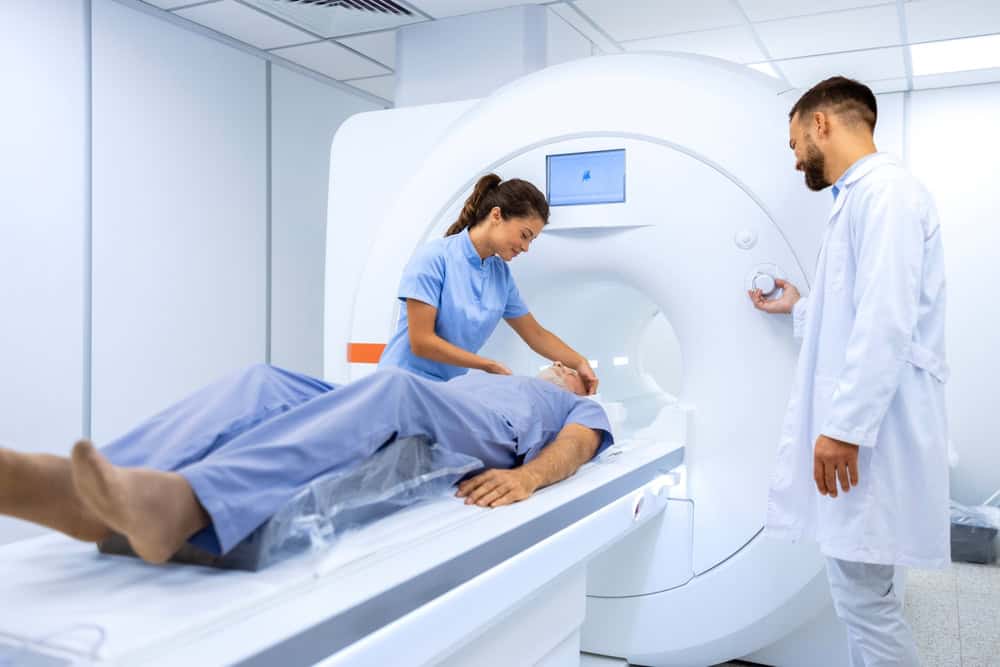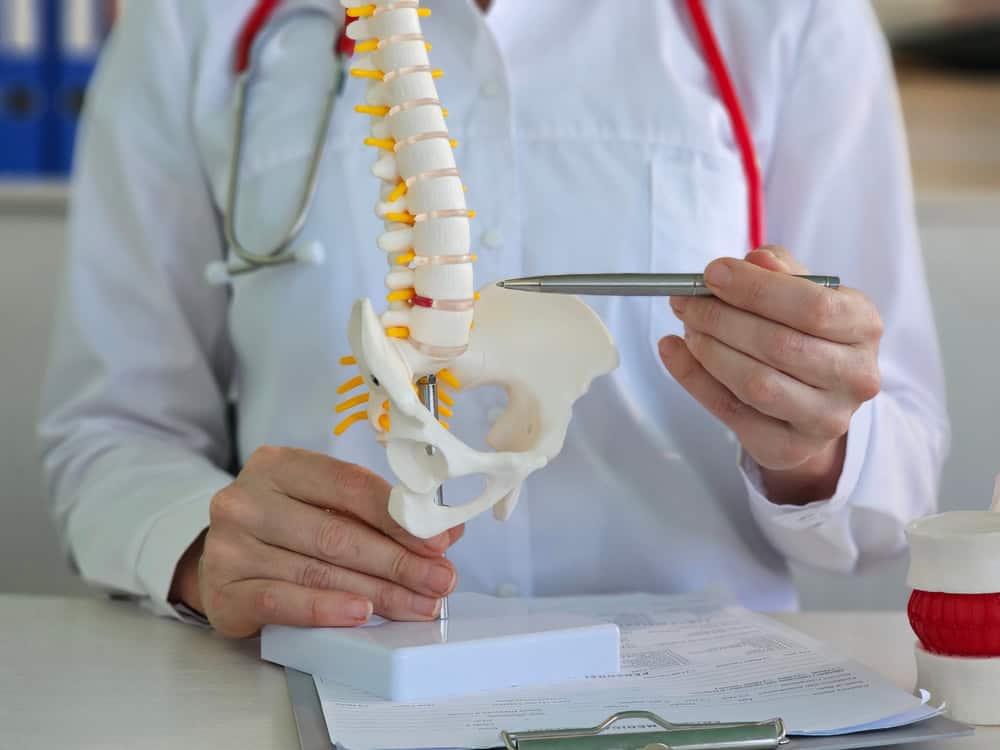Summary:
What Is EMG Diagnostic Testing and How Does It Work
EMG diagnostic testing, or electromyography, measures the electrical signals your muscles produce when they’re at rest and when they contract. Think of it as listening to the conversation between your nerves and muscles to identify where communication might be breaking down.
The process involves placing small electrodes on your skin or inserting thin needle electrodes directly into specific muscles. These electrodes detect electrical activity and translate it into visual patterns on a monitor, creating a detailed map of how well your nerves are communicating with your muscles.
What makes EMG testing particularly valuable is its ability to differentiate between muscle problems and nerve problems. Your muscles shouldn’t produce electrical signals when you’re at rest, so any abnormal activity immediately signals an underlying issue that needs attention.
EMG Testing Process: What to Expect During Your Appointment
Your EMG diagnostic testing appointment typically takes 60 to 90 minutes, depending on how many muscles and nerves need evaluation. The process is straightforward and designed to gather maximum information with minimal discomfort.
Before the test begins, you’ll be asked to wear comfortable clothing that allows easy access to the areas being tested. The testing room is set up with specialized equipment including an oscilloscope that displays electrical activity and audio amplifiers that allow your doctor to hear the electrical signals your muscles produce.
During the surface EMG portion, electrodes are placed on your skin over specific muscles. You might feel a slight tingling sensation, similar to mild static electricity, as small electrical pulses stimulate your nerves. For the needle EMG component, thin electrodes are inserted directly into muscles. Most people describe this as feeling like a small pinch or injection.
Your doctor will ask you to relax certain muscles completely, then contract them at varying intensities. This allows us to observe how your muscles respond to nerve signals under different conditions. The entire process is performed by a neurologist who specializes in brain and nerve disorders, ensuring you receive expert interpretation of your results.
The electrical patterns created during testing provide a detailed picture of nerve and muscle function. Healthy muscles show specific patterns when contracting and remain electrically quiet when at rest. Any deviation from these normal patterns helps identify the location, extent, and nature of nerve or muscle problems.
Conditions Diagnosed Through EMG Testing
EMG diagnostic testing excels at identifying a wide range of neuromuscular conditions that often present with similar symptoms. This precision is crucial because treatments vary significantly depending on whether you’re dealing with nerve damage, muscle disease, or communication problems between nerves and muscles.
Peripheral neuropathy represents one of the most common conditions diagnosed through EMG testing. This condition affects nerves outside your brain and spinal cord, often causing numbness, tingling, burning sensations, and weakness in your hands and feet. EMG testing can pinpoint exactly which nerves are affected and how severely they’re damaged.
Carpal tunnel syndrome, a compression of the median nerve in your wrist, shows distinct patterns on EMG testing. The test can confirm the diagnosis and measure the severity of nerve compression, helping determine whether conservative treatment might work or if surgical intervention is necessary.
Muscle diseases like muscular dystrophy, inflammatory myopathy, and metabolic muscle disorders each produce characteristic electrical patterns. EMG testing can distinguish between these conditions and help track disease progression over time.
Nerve root compression, often caused by herniated discs or spinal stenosis, creates specific patterns that EMG testing can identify. This information helps determine which nerve roots are affected and guides treatment decisions.
Motor neuron diseases, including ALS, show progressive changes in electrical patterns that EMG testing can detect early in the disease process. While these conditions are serious, early detection allows for better treatment planning and symptom management.
The test also identifies neuromuscular junction disorders like myasthenia gravis, where the connection between nerves and muscles malfunctions. These conditions require specific treatments that differ completely from nerve or muscle diseases.
Want live answers?
Connect with a NY Spine Medicine expert for fast, friendly support.
Nerve Conduction Studies: The Perfect Partner to EMG Testing
Nerve conduction studies (NCS) work hand-in-hand with EMG testing to provide a complete picture of your neuromuscular health. While EMG measures how muscles respond to nerve signals, NCS evaluates how well and how quickly electrical signals travel through your nerves themselves.
The combination of these two tests is powerful because it helps distinguish between different types of problems. If your EMG shows abnormal muscle activity but your nerve conduction study is normal, the problem likely lies within the muscle tissue itself. If both tests show abnormalities, nerve damage is more likely the culprit.
NCS typically happens first during your appointment. Electrodes are placed on your skin, and small electrical pulses stimulate specific nerves while recording electrodes measure how the signal travels. The speed and strength of these signals reveal crucial information about nerve health.
How Nerve Conduction Studies Complement EMG Results
The relationship between nerve conduction studies and EMG testing creates a comprehensive diagnostic approach that leaves little room for guesswork. Each test provides unique information that, when combined, offers a complete understanding of your neuromuscular system.
Nerve conduction velocity—how fast electrical signals travel through your nerves—varies among individuals but falls within predictable ranges for healthy nerves. Slower-than-normal conduction often indicates nerve damage, while complete absence of conduction suggests severe nerve injury or disease.
The amplitude of nerve signals, or their strength, provides additional diagnostic information. Reduced amplitude might indicate nerve damage, while normal amplitude with slow conduction could suggest problems with the nerve’s protective coating (myelin sheath).
When nerve conduction studies show abnormal results, EMG testing helps determine whether the problem affects the nerve itself, the connection between nerve and muscle, or the muscle tissue. This distinction is crucial because each scenario requires different treatment approaches.
For example, if you have weakness in your hand, nerve conduction studies can determine whether the problem originates from nerve compression at your wrist (carpal tunnel syndrome), your elbow (cubital tunnel syndrome), or your neck (cervical radiculopathy). EMG testing then evaluates how this nerve problem has affected the muscles in your hand.
The timing of these tests also provides diagnostic clues. Nerve conduction studies can detect problems immediately after nerve injury, while EMG changes might not appear for several weeks. This timing difference helps determine when an injury occurred and how it’s progressing.
Together, these tests create a detailed roadmap of your neuromuscular system, identifying not just what’s wrong, but where the problem is located, how severe it is, and how it’s likely to progress. This comprehensive information enables us to develop targeted treatment plans that address the root cause of your symptoms.
Treatment Planning Based on EMG and NCS Results
The detailed information provided by EMG diagnostic testing and nerve conduction studies transforms guesswork into precision medicine. Your test results create a specific roadmap for treatment that targets the actual cause of your symptoms rather than just managing them.
When results indicate nerve compression, treatment might focus on reducing inflammation, modifying activities that worsen compression, or considering surgical decompression if conservative measures fail. The severity of compression shown on your tests helps determine whether immediate intervention is necessary or if a gradual approach makes more sense.
Muscle diseases identified through EMG testing often require different treatment strategies. Some respond well to medications that reduce inflammation or modify immune system activity. Others benefit from specific exercise programs designed to maintain muscle strength without causing additional damage.
The progression of your condition, as revealed by EMG patterns, influences treatment urgency. Rapidly progressive conditions might require immediate intervention, while stable or slowly progressing problems allow time for conservative treatments to work.
Your test results also help establish realistic expectations for recovery. Some nerve injuries heal completely with proper treatment, while others result in permanent changes that require long-term management strategies. Understanding these differences from the beginning helps you make informed decisions about treatment options.
Follow-up EMG testing can track your response to treatment over time. Improvements in electrical patterns often precede noticeable symptom relief, providing early evidence that treatment is working. Conversely, worsening patterns might indicate the need to modify your treatment approach.
The precision of EMG diagnostic testing also helps avoid unnecessary treatments. If your symptoms suggest one condition but EMG results point to a different cause, you can avoid treatments that wouldn’t help your actual problem. This targeted approach saves time, reduces costs, and gets you feeling better faster.
Insurance coverage often depends on having clear diagnostic evidence of your condition. EMG and nerve conduction study results provide the documentation needed to support coverage for appropriate treatments, whether that includes physical therapy, medications, injections, or surgical procedures.
Getting Accurate Answers Through EMG Diagnostic Testing
EMG diagnostic testing represents the gold standard for understanding neuromuscular problems because it provides objective, measurable evidence of what’s happening in your body. Rather than relying on symptom descriptions alone, these tests create a detailed picture of nerve and muscle function that guides effective treatment.
The combination of EMG testing and nerve conduction studies offers comprehensive evaluation that distinguishes between different types of problems with remarkable precision. This accuracy is essential because the difference between nerve damage and muscle disease determines your entire treatment approach.
When you’re dealing with unexplained weakness, persistent pain, or troubling numbness, you deserve answers based on solid diagnostic evidence. At NY Spine Medicine, we use advanced EMG diagnostic testing to identify the root cause of your symptoms and develop personalized treatment plans that address your specific condition effectively.





